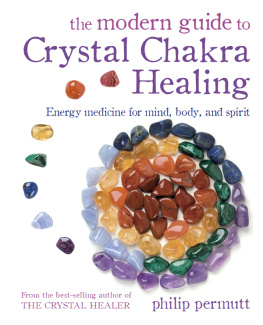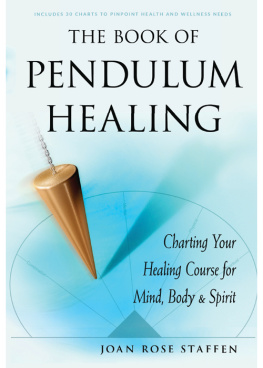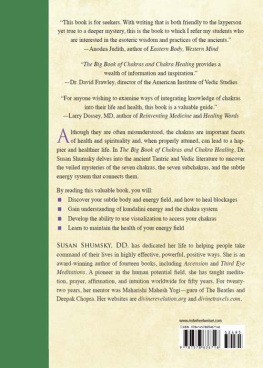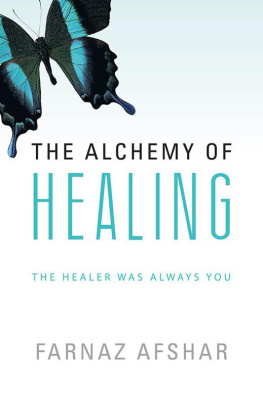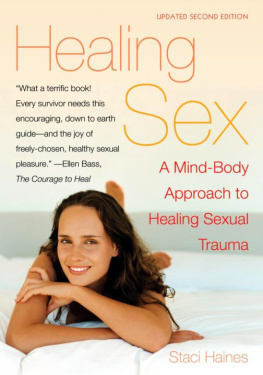CHANGE YOUR MIND HEAL YOUR BODY
When modern medicine has no cure, the answer lies within.
ANNA PARKINSON
Foreword by Benjamin Zephaniah
To my mother with love and gratitude
Anna Parkinson is a former news and current affairs producer with the BBC. Her quest in 2002 to find a cure for her brain tumour led her to discover healing. She is now a practising healer and gives talks and workshops on traditional healing and natural remedies. She is also author of Natures Alchemist, about 17th-century apothecary John Parkinson, who was herbalist to Charles I. She lives in Kent with her family. For more information see www.annaparkinson.com.
Foreword
We all live in this modern world, dragging this body around town, doing stuff we should be doing, even though all the time we have this awareness in the back of our mind that there is something about this body we should know more about. There are aspects of our consciousness that were written about thousands of years ago. We get a glimpse of their power from time to time, but generally we stick with whats familiar to us today even though we yearn to know a bit more. Most of us dont know our own strength, but this story shows you how you can find yours.
I first met Anna as a typically conventional, educated middle-class English woman. She was informed, practical, busy, capable and sceptical, although she was always curious and open minded. Anna was a journalist, making radio documentaries for the BBC, and I was developing my poetry and writing novels, trying to get some unusual voices onto Radio 4.
This story begins some time after our paths separated. In the midst of her conventional life, Anna was hit with a diagnosis that would shake the foundations of anyones world. She was told she had a brain tumour and learned soon afterwards that it was inoperable. You will read here the intensely personal story of how she battled to survive and emerged triumphant despite all the disappointments and disasters on the way. Eight years after the initial diagnosis, without any medical intervention, Annas scan results showed that the tumour had shrunk to nothing more than a tiny piece of scar tissue, and if you met her today you would never guess she had been ill. As I read the ups and downs of her personal journey, which are sometimes sad, and sometimes funny, I feel the presence of an authentic voice which reminds me of who we are and what we can be.
Anna didnt go looking for this experience. She was just going about her life and it was suddenly thrust upon her. But faced with disaster, she explored and tested every possible solution, until at last she discovered healing. This book is the story of how she not only healed herself but became a healer. The remarkable thing about Annas story is not so much her recovery as the discoveries she makes about the power of human consciousness along the way.
So many people have made claims for their power as healers and surrounded what they do with mystery. Anna demystifies the process of how healing works for anything from arthritis to cancer, believing that it is important to use your rational mind to help yourself heal. She shows us how ancient teachings and modern biological science correlate, explaining exactly why your mind has such a powerful effect on your body. Its Annas contention that we all have the ability to be healers if we learn to listen to ourselves and use the power we have. She has mastered the art of going to the self of her self, drowning out the chatter and trusting the voice inside to lead her, and that is a journey of both power and mystery.
In a clear, accessible way she reminds us all how to breathe, how to love, how to live and the extraordinary things we can achieve if we trust our bodies, our selves.
Benjamin Zephaniah
Contents
Publishers note
The information in this book is not intended as a substitute for professional medical advice and treatment. If you are suffering from any medical conditions or health problems, it is recommended that you consult a medical professional before following any of the advice or practice suggested in this book. Watkins Publishing Limited, or any other persons who have been involved in working on this publication, cannot accept responsibility for any injuries or damage incurred as a result of following the information, exercises or therapeutic techniques contained in this book.
Your stepping inwards from the air to earth
Winds round itself to meet the open sky
So vanishing becomes a second birth.
Farewell. Return. Farewell. Return again.
Here home and elsewhere share one mystery.
Here love and conscience sing the same refrain.
Here time leaps up and strikes eternity.
Sir Andrew Motion, 2006
Reproduced by kind permission of the poet.
Preface
In the summer of 1984 I was in Leh, the capital of Ladakh in northern India, interviewing the Dalai Lama. His visit to Ladakh that summer was a big event. Although it belongs to India, the Himalayan region of Ladakh is ethnically part of Tibet, and most of its inhabitants are Tibetan Buddhists. I had wanted to visit this place, sometimes known as Little Tibet, for a long time, to see what a Tibetan Buddhist culture would look like without the heavy-handed intervention of Chinese Communism.
Ladakh is mysteriously beautiful, albeit sparsely populated, poor and so cut off from Kashmir by the mass of the Himalayas that it is largely forgotten. That is why the Dalai Lamas visit was greeted with such excitement. The Ladakhis are devoted to him as their spiritual leader, and the spiritual part of their existence is deeply interwoven with their way of life. Some of their traditions exist for practical reasons. They practise a form of polyandry, for example. One woman marries several men in a family so as to keep the population down and eke out an existence on the precarious patches of soil that are not washed away down the mountains in the summer melt. But their spiritual practice is part of the daily rhythm of their lives. They prostrate themselves at the altars of the temples and shrines dotted around the country. They turn the great prayer wheels that surround the temple in the capital and murmur their prayers. Their devotion extends to sending away their young children to join the monasteries and nunneries that perch between the folds of the mountains, as Christians once did in Europe. In this way their children have a chance for spiritual education which, they firmly believe, brings blessings to all the family and the community at large.
The Ladakh capital fizzed with anticipation on the day the Dalai Lama arrived. The womens heavy headdresses were set with big lumps of turquoise. The monks stood out from the crowd in tall saffron hats. Strings of seed pearls, big hoop earrings, brown eyes and white-toothed smiles flashed in the sunlight. The Dalai Lamas party arrived in a cavalcade of open-topped jeeps, his entourage standing up in the back, like an army of holy bandits. There was a cacophony of welcoming noise from conch shells, trumpets and horns. Then, as the dust settled, a small man with an amused expression and an incongruous pair of glasses perched on his nose, stepped out to greet the crowd.
It had not been easy to arrange an interview with him. My formal letters and credentials from my employer, the BBC, elicited no more than a possibility. That possibility had to be negotiated in person right up to the day before the visit with the Indian official who was in charge of security. Thats why, I suspect, there were no more than three reporters in the room when the time came for the Dalai Lama to give interviews, and all of us were young women. Any male reporter with the same intention was simply not equipped to give the Indian official what he hoped to extract as a price for his permission.
Next page


